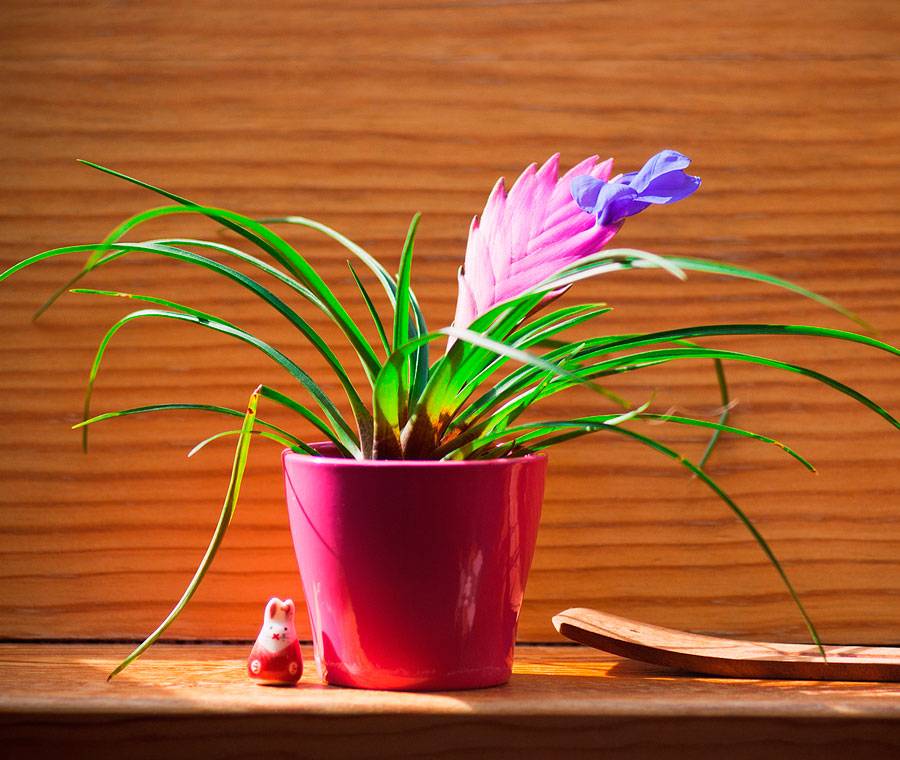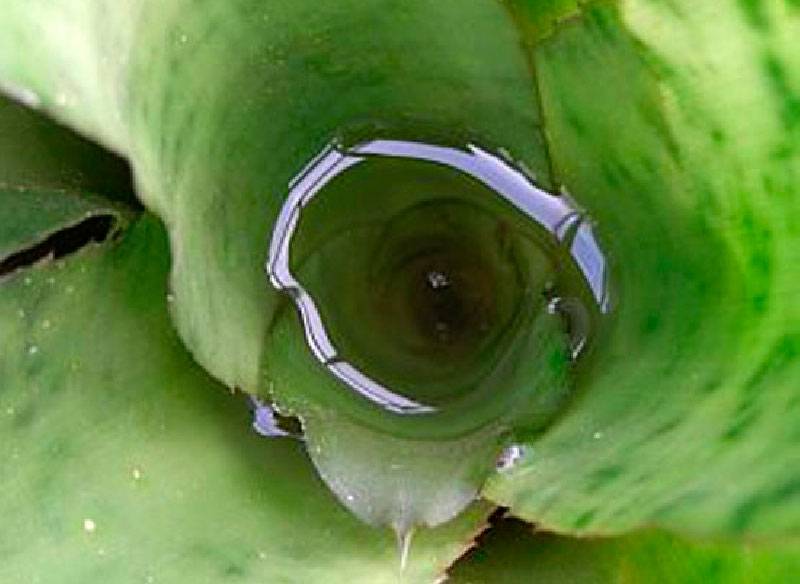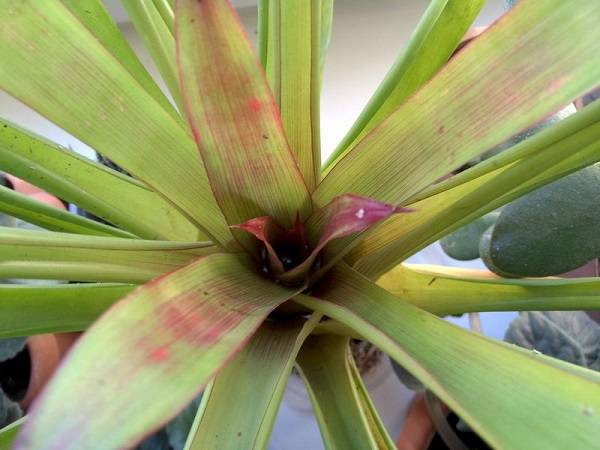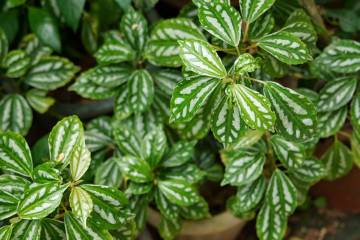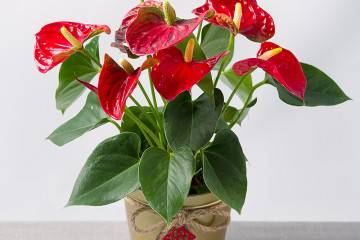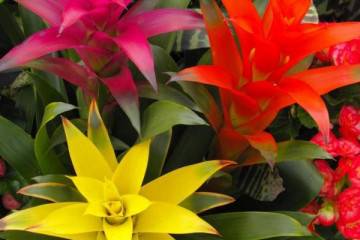Bromeliad - home care, watering and reproduction
Bromelia is a flower that received its unusual name in honor of the Swede, who was fond of botany, Olaf Bromelius. Additionally, he was engaged in healing. This miracle of nature feels great in a temperate climate. Externally, bromeliad houseplants are always brightly colored. They grow well in the climatic conditions of our country. The sight of an exotic flower immediately attracts attention.
Bromelia: home care
For a beautiful, rich flowering, bromeliad requires proper care at home and outdoors. It is easy to create the necessary microclimate at home. Since the exotic guest of Russia at the place of birth is Latin American, the climate needs a tropical one.
The unusual appearance of the flower gives the impression of demanding and capriciousness. In fact, caring for him is simple, subject to the growing conditions:
- correct, suitable soil for bromeliads;
- systematic spraying of the plant;
- timely introduction of minerals and organics;
- a sufficient amount of light and humidity levels in the room.
It is worth dwelling a little more on the last point: humidity and lighting. It is these 2 factors that have a significant impact on the quality of flowering. To maintain the humidity at the proper level, you can put a small aquarium, a decorative cup, and a vase of water next to it.
The flower does not like direct sunlight. Especially carefully you need to monitor the lighting in the summer-autumn period. By any means, scorching rays must be excluded, otherwise there will be burns on the leaves.
In winter and autumn, a special phytolamp will come in handy for illuminating plants when there is a lack of natural light.
How to choose a healthy plant in the store
When buying, it is important to carefully examine the flower. There should be a rosette formed from healthy, green leaves. Sometimes the leaves may have a pattern similar to marble. The trunk is missing. The peduncle is located above all other parts of the plant, it is brightly colored. It is such a plant that you can safely purchase.
Do I need to transplant bromeliads after purchase
A transplant can be carried out if the actual container in which the plant is located is small. In this case, you need to place the flower in a larger pot.
The transplant is carried out as follows:
- Prepare a new container and soil (buy or mix it yourself).
- Fill the pot with soil, leaving a hole to plant the bromeliads.
- Without shaking off the soil from the previous container from the roots, transfer the plant to a new place, having previously moistened it well with water.
At the very end, it is worth adding a little soil, gently slapping it. Tamping is needed so that the position of the plant is stable.
Choosing a soil for bromeliads
The flower loves an acidic environment. This is a prerequisite for healthy growth and beautiful, long-lasting flowering. You can't take garden land.It is better to purchase already prepared soil in a specialized store. A mixture for planting orchids, with peat and a little sand, is perfect.
Bromelia is a "Latin American", and therefore she needs to provide a certain temperature regime that mimics the climate of the tropics. Temperatures below +12 ° C can destroy the plant. The ideal temperature range is + 23 ... + 25 ° С.
Bromeliad: how to water
The flower needs systematic watering. He is highly sensitive to water shortages. It is especially often required to water in summer, from below, through a pallet. Only boiled chilled water is suitable. Reduce watering when it gets colder. With the onset of cold weather, it is enough to moisten the soil from 1 to 2 times in 7 days.
Water stagnation and waterlogging should not be allowed. If this happens, you need to wait for the top layer to dry and water over the bottom using a tray. In the summer, you need to water the plant. Stop spraying at an air temperature of +18 ° C.
Once a month, be sure to clean the rosette of the flower, and once a week they wipe the leaves from dust. To maintain the required humidity level (at least 70%), simply spray water with a spray bottle in the room where bromeliad grows.
Bromeliad has faded: what to do next
After cutting the rosette, the plant looks less decorative, but watering continues. The soil is moistened through the pallet. Care remains the same. When the leaves cover the cut, you can transplant the mother plant into a larger pot so that the green mass grows.
Reproduction of bromeliads at home
It's time for the plant to multiply - after flowering. Tiny shoots are formed - "kicks" or just kids. They need time to gain strength - from 2 to 3 months. Then they can be cut, cut, dried. Charcoal is an excellent drying powder.
Young plant-shoots are immediately placed in a permanent place in the soil. Usually, they have a strong root system, and the children will quickly take root in a new place.
Reproduction is best done at the most favorable time for this: the end of winter - early April.
During planting, the soil is constantly wetted. In a couple of months, the seedlings adapt. Moderate watering is especially important at this time. The temperature is maintained at an optimal level of +20 ° C. Flowering should be expected a couple of years after planting.
Bromelia Mix
A name that is common to this family. It includes:
- Inorgelia;
- Guzmania;
- Ehmeya and others.
All varieties require the same care as Bromeliad Mix. How to care is described below. There is an interesting variety - the Bromelia de sapato flower. It has a similarity to women's stiletto heels.
Bromeliad Flower Mix: Home Care
All it takes to create a home “tropics” is the right temperature and humidity. Thanks to good care, it is possible to raise several generations of children who will decorate the house for a long time.
Watering, Daily Care and Moisture Regimen
Watering is of particular importance for the flower. It is very simple to determine the need for it: touch the top layer of the substrate: if it is dry, you need to water it.
To humidify the air in the room where bromeliad grows, you can put a vessel with water. Bromelia loves to be wiped with leaves. This procedure must be carried out in the summer. Once every 14 days, the water in the outlet is replaced with fresh water.
Diseases, pests and methods of dealing with them
Unfortunately, the Bromeliad family is affected by pests. They are also susceptible to disease.
Signs that the plant is sick:
- the edges of the leaves are dry;
- spots on the leaf plate;
- leaves do not grow, become soft;
- the process begins to darken.
In the first case, moderate watering may help. This is effective when the vegetative part dries. Darkening of the appendix signals that the room is not warm enough. When the shoots are not growing, there is definitely too much water in the soil.
Pests
The most common pests:
- thrips;
- shield;
- spider mite.
In the fight against all of these insects, it is allowed to use insecticides. For example, Aktellik, Bicol, Akarin and others.
Fertilizers and feeding
Fertilize exclusively with minerals once every 21-28 days during the flowering period. In winter, fertilizing is applied less often and the concentration is reduced by 2 times than what is written in the instructions.
Bromelia Moora
Moore's bromeliads have long, lanceolate leaves up to 25 cm wide. The width does not exceed 5 cm. There are thorns along the edges. The flower has a dark green surface in the center, turning into a scarlet color. The transition is almost imperceptible. The inflorescence is spike-shaped and colored yellow.
How to water bromeliads, air humidity
Irrigation conditions do not differ from the humidification of other representatives of this exotic family.
Optimum temperature for growing bromeliads
The optimum temperature for Moor's bromeliads, which is just beginning to bloom, is + 24 ... + 25 ° С. It is allowed to lower the temperature by 5 ° C when the buds are fully open.
Location and lighting
The room should be well lit, without direct rays. It is better to place the flowerpot in the west or east. So this plant will be more comfortable.
Plant substrate
For a young plant, a nutritious substrate is needed, consisting of several types of humus. After a few years, the soil is replaced.
Bromelia is the generic name for a huge family of flowers native to the American South. Some varieties are ideal for home decoration. The plant requires moderate watering, high humidity, indirect light and warmth. Growing principles for all varieties are the same.

